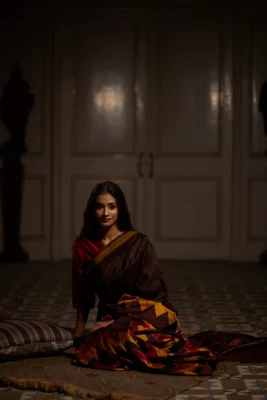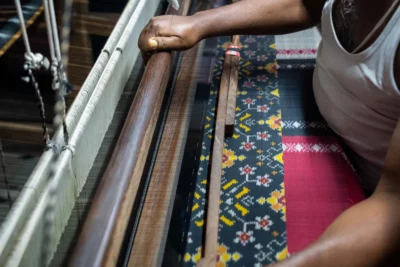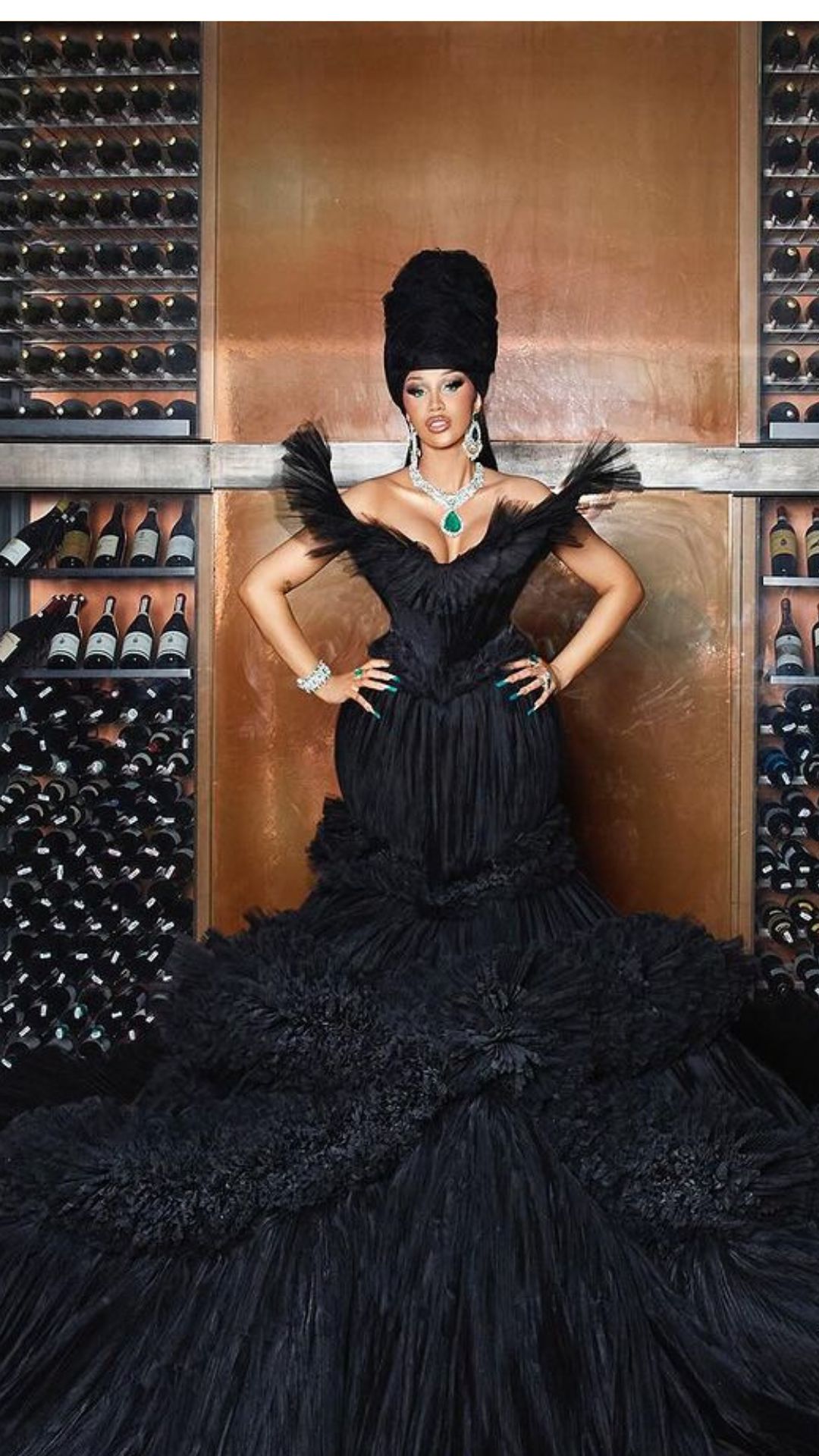
While numerous brands have idealized handloom, this particular label aims to infuse essential transparency into the system.
“It’s high time we move beyond labeling weavers as mere artisans or skilled laborers. They deserve the recognition of being artists in their own right,” emphasizes Manish Saksena, a textile expert and the head of Aadyam Handwoven, a social enterprise under Aditya Birla. With a purposeful intent, they have been diligently developing a distinctive and revitalized handloom brand that distinguishes itself from the conventional “ethnic” stereotype for the past six years. In October 2020, this effort came to fruition as they launched Aadyam in Delhi’s Khan Market. The brand offers a captivating array of sarees, shawls, dupattas, and home linens sourced from four primary clusters: Benaras, renowned for its exquisite brocades; Kutch, known for bhujodi and tangalia weaves; Pochampally, celebrated for ikat patterns; and Kashmir, recognized for its authentic Pashmina and delicate embroidery. Presently, Aadyam’s products are also available at Palladium Mall, Mumbai, and within a standalone store at Telangana’s Craft Council. The brand’s commitment extends to a unique traveling textile initiative called ‘Pracheen,’ which strives to exhibit rare, museum-quality pieces created through the Aadyam approach. This initiative aims to support weavers in enhancing their skills and preserving ancient Indian weaving techniques.

Indian fashion is inherently intertwined with Indian artisans, forming an inseparable bond; however, the converse of this relationship might not hold true in all cases. Although the position and work of Indian karigars (craftsmen) have recently been celebrated and showcased by numerous brands (many brands feature their weavers and pattern makers on fashion runways during events like fashion weeks; their social media and clothing tags proudly reflect the creators), a harmonious balance needs further fine-tuning. For those brands that grasp and honor this delicate equilibrium, their products embody authenticity, heritage, and endurance. Aadyam exemplifies this principle through action rather than mere words. Their demonstration comes vividly alive at the Pochampally Ikat cluster. Ikat, derived from the Malay word ‘to bind,’ involves intricately tie-dyeing yarns before the weaving process, creating a distinct appearance—unique among weaving techniques worldwide. Ikat traditions flourish not only in India but also in countries like Indonesia, Japan, South America, and Uzbekistan. In India, regions such as Odisha, Hyderabad-Telangana (known for Sonia Gandhi’s favorite Telia Rural sarees), and Gujarat’s renowned double Ikat Patan Patola are cherished among saree collectors. Manish Saksena, the driving force behind Aadyam, explains the essence of an Aadyam creation:
1. Craft Signature: Each piece should authentically represent its craft and cluster, immediately recognizable.
2. Price-Skill Equilibrium: The price should align with the level of skill involved. If a weaver invests time in crafting something intricate, they should be fairly compensated. Simultaneously, our store items are competitively priced.
3. Unique Twist: There should be an element of innovation or distinctiveness. For instance, with sarees, we often hear women say they already have something similar. We ensure a curated collection that offers unparalleled uniqueness. For example, Gyaser cushion covers, an uncommon find in retail stores.

The practical reality of collaborating with artisans in remote villages is undoubtedly challenging. Many of them are hesitant to embrace experimentation, and a deficit of trust can exist. How do you manage such a situation?
“We treat our weavers as our business partners. They are fully informed about how we price our items in stores. We don’t engage in negotiations that undercut their expectations; rather, we encourage a fair profit margin. Our intention is not to exploit their skills for the lowest price, but to acquire the best quality at a reasonable price. Secondly, we view them as artists, emphasizing the genuine value of their creations. Regard for them as mere skilled laborers would not yield exceptional outcomes. Moreover, we eliminate their job insecurity, ensuring a consistent year-round workload.
Could you elaborate on the ‘Pracheen’ presentation, which involves travel?
MS: True revival is often difficult, as people often claim, but our focus is on preserving lost techniques and skill sets. We collaborate closely with our craftsmen to craft exceptional pieces inspired by rare ancient archives, whether their own or external. These pieces present challenges to their skill set, and we introduce modern elements through color manipulation or motif arrangement, rendering them museum-worthy. These process-driven and narrative-rich collectibles deserve recognition beyond the context of a store. We have taken this showcase to Delhi and Pune, and our aim is to allow more people to witness the exceptional outcomes that can emerge from dedicated and sustained efforts.”
POST A COMMENT
You must be logged in to post a comment.















